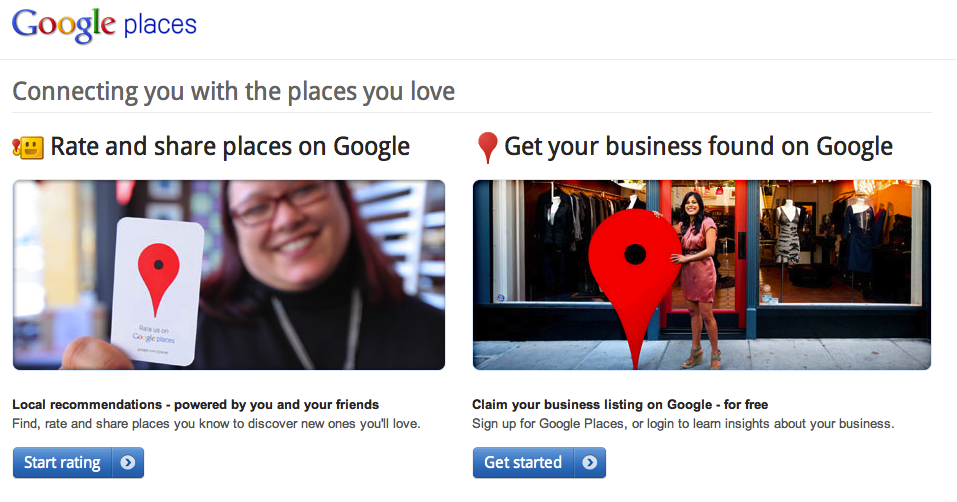 Making your mark in SEO…
Making your mark in SEO…
Last week, Greg made a strong case for maintaining brand continuity between offline and paid search marketing efforts. But what about maintaining that brand continuity between offline and organic search? Now, if you’re not ranking for your own brandname(s), then you have problems that are bigger than this blog post (i.e. you’ve probably been penalized for black hat tactics). But there are other ways that brand continuity can inform your SEO strategy and help you achieve better rankings overall.
Brand Signals & SEO
Over the last year, brand signals have become an important ranking factor. After all, Google wants to provide users with results that are actually going to offer them what they’re looking for (not just keyword dense site copy), and big brands are more likely to have the products and inventory that their meta content and page copy claim to. Now, there are many potential brand signals, ranging from query volume and click-through-rate (CTR) to user acceptance and user reviews. But many of them post the chicken-or-the-egg problem — e.g. if you need branded queries to help you rank on targeted keywords, how will users ever discover your brand through targeted product queries? So what you have to do is start with the “brand signals” that you caninfluence, and leverage offline and other marketing efforts to augment those signals.
Branded Linkbuilding
As the chart above illustrates, backlinks metric still account for >40% of ranking factors. Indeed, no other ranking factor compares to the influence that either backlink metric has a ranking factor.

Now, an important part of building a strong linkscape is making sure that not too many of your links use (1) the same anchor text, or (2) only targeted anchor text. In other words, if your linkscape doesn’t feature a variety of long-tail or untargeted anchor text backlinks, Google knows that you’re trying to game your rankings, and might penalize you. So one of the first places that your branding should impact your SEO is in your linkbuilding. There are a number of ways that you can work your branding into your linkbuilding so that you have a more seemingly “natural” linkscape. URL links: Many free directories feature URL links (with and without the “http://” in the anchor text), and getting links from these directories is often as easy as filling out a submission form. Granted, these links don’t carry very much weight at all (and might not even get indexed for some time), but it’s a very quick and cheap way to (1) boost your number of backlinks, and (2) dilute all the targeted anchor text links in your linkscape. Branded Anchor Text Links: It always looks odd when targeted anchor text points to an index page. It seems unnatural and unhelpful to users, which is exactly the reason that Google has started emphasizing brand signals in the first place. Not only can branded anchor text links (e.g. “Brand Name” or “BrandName.com”) help dilute an overly targeted linkscape, it will also send a signal to search engines that your brand enjoys brandname recognition — which, in turn, will boost the overall trust/authority of your brand/domain, and help you rank better overall. These links are also a lot easier to solicit because webmasters don’t feel that you’re trying to trick their users into clicking on something mysterious. Branded Description Links: This is where less-target, long-tail anchor text links meets branding. Simply put, they’d feature your brandname + a description of what your company does (e.g. “McDonald’s hamburgers” or “Iams dog food”). These are advantageous because they can be easily placed into content as part of a sentence that makes perfect sense (using guest blogging or article submissions), and show to search engines that other sites are actually talking about both your brand and its products. These links are also useful to diversifying the linkscape of product/category pages on your site.
Company Listings & Reviews
Another way to boslter your branded SEO initiatives is through branded company listings and profiles. Not only do these provide some additional URL and branded anchor text links, but they help reinforce the keyword categories that your site is relevant for.
 Google Places – Listings & Reviews
Google Places – Listings & Reviews
Simply put, a “real brand” is going to have a footprint that goes beyond its site/domain, so company listings reinforce that you brand/site is trustworthy and legitimate. User review features on these review sites also allow you to crowdsource additional trustworthiness. So once you’ve established and optimized (for your vertical) your company listings, devise a strategy to drive positive reviews. This may be as simple as asking some of your partners, or including the request in an email blast to customers.
Social Profiles for SEO
 Lastly, no credible brand is without a social presence. And these social profiles also send “social signals” to search engines that your brand is relevant and popular. Essentially, backlinks started out as the core of SEO because search engines needed a way to gauge the popularity of a site. But not everyone has a site from which to link to other sites. As social media went mainstream, though, most people registered some kind of social media profile. So search engines have started turning to “social signals” to determine whether a site is trust by and popular with actual human beings (and not just other webmasters). Basically, social links in and of themselves don’t carry that much weight at all — in fact, most of them are nofollow. But search engines will find it suspicious if you have a robust backlink profile but no actual social signals from actual users/human beings.
Lastly, no credible brand is without a social presence. And these social profiles also send “social signals” to search engines that your brand is relevant and popular. Essentially, backlinks started out as the core of SEO because search engines needed a way to gauge the popularity of a site. But not everyone has a site from which to link to other sites. As social media went mainstream, though, most people registered some kind of social media profile. So search engines have started turning to “social signals” to determine whether a site is trust by and popular with actual human beings (and not just other webmasters). Basically, social links in and of themselves don’t carry that much weight at all — in fact, most of them are nofollow. But search engines will find it suspicious if you have a robust backlink profile but no actual social signals from actual users/human beings.  So setting up your social profiles is important beyond including those nofollow backlinks in your profile and snagging another spot in the SERPs on a branded query. They also provide a platform for real human beings (users) to interact with your brand and its branded content, and send social signals to the search engines that your brand and domain are legitimate and trustworthy. Of course, that being said, generating those social signals involves more than setting up your profile and waiting for your popularity to accrue. You actually have to get users engaged with your brand so that they generate those social signals. This means keeping your profiles updated with branded content that users can Tweet, Like, or Share.
So setting up your social profiles is important beyond including those nofollow backlinks in your profile and snagging another spot in the SERPs on a branded query. They also provide a platform for real human beings (users) to interact with your brand and its branded content, and send social signals to the search engines that your brand and domain are legitimate and trustworthy. Of course, that being said, generating those social signals involves more than setting up your profile and waiting for your popularity to accrue. You actually have to get users engaged with your brand so that they generate those social signals. This means keeping your profiles updated with branded content that users can Tweet, Like, or Share.
A Branded SEO Strategy
As search engines continue to favor brands, you have to think like a big brand if you want to rank. This means having branding guidelines and applying them to the various facets of SEO. Onsite, this means drawing a clear connection between your brand and the keyword targeted products/services it provides. Offsite, it means branding your linkbuilding and securing branded real-estate that signals that your company is a legitimate, trustworthy brand that deserves to rank in the vertical it operates.




